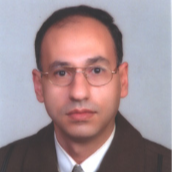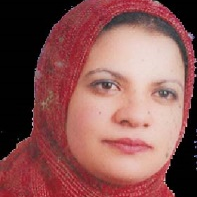International Journal of Information Technology and Computer Science (IJITCS)
IJITCS Vol. 8, No. 11, 8 Nov. 2016
Cover page and Table of Contents: PDF (size: 1527KB)
Adaptive Local Means Filter for Polarimetric SAR Images; Despeckling for Homogeneous and Heterogeneous Clutter Models
Full Text (PDF, 1527KB), PP.33-45
Views: 0 Downloads: 0
Author(s)
Index Terms
Speckle reduction, Synthetic Aperture Radar (SAR), image segmentation, Radar Clutter Model
Abstract
Polarimetric radar images suffer from the presence of speckles that degrade the received signal and introduce untruthful indications about the nature of the objects. In this study, we proposed a new framework to filter polarimetric images in which the edges and the channel correlation are preserved. Through a proposed scheme, the image is segmented into groups of regular and irregular pixels. The segmentation process is based on the homogeneity of the texture variation throughout the image. In the homogeneous area, speckle reduction is performed using the adaptive local mean of the neighboring pixels. For non-homogeneous surfaces, the scheme works independently for each set of resolution cells using the general product model containing both intensity and texture information. Quantitative and qualitative assessments confirmed that the proposed filter achieved highly ranked order; it has the ability to preserve fine details, polarimetric information, and to maintain the scattering mechanism of the different objects.
Cite This Paper
Ashraf K. Helmy, Ghada S. El-Taweel, "Adaptive Local Means Filter for Polarimetric SAR Images; Despeckling for Homogeneous and Heterogeneous Clutter Models", International Journal of Information Technology and Computer Science(IJITCS), Vol.8, No.11, pp.33-45, 2016. DOI:10.5815/ijitcs.2016.11.05
Reference
[1]Lee, J.S., Pottier, E., “Polarimetric radar imaging from basics to applications”, CRC Press, Boca Raton, pp. 53-84, 2009
[2]N. R. Goodman, “Statistical analysis based on a certain multivariate complex Gaussian distribution (an introduction),” Ann. Mathemath. Statist., vol. 34, no. 1, pp. 152–177, 1963.
[3]J. Lee, K. W. Hoppel, S. A. Mango, and A. R. Miller, “Intensity and phase statistics of multilook polarimetric and interferometric SAR imagery,” IEEE Trans. Geosci. Remote Sens., vol. 32, no. 5, pp. 1017–1028, Sep., 1994.
[4]R. J. A. Tough, D. Blacknell, and S. Quegan, “A statistical description of polarimetric and interferometric synthetic aperture radar data,” Proc. R. Soc. Lond. Amer., vol. 449, no. 1937, pp. 567–589, 1995.
[5]G. Farage, S. Foucher, and G. B. Benie, “Comparison of PoISAR speckle filtering techniques,” in Proc. IGARSS, pp. 1760–1763, 2006.
[6]J. S. Lee, M. R. Grunes, and S. A. Mango, “Speckle reduction in multipolarization, multifrequency SAR imagery,” IEEE Trans. Geosci. Remote Sens., vol. 29, no. 4, pp. 535–544, Jul. 1991.
[7]J. S. Lee, M. R. Grunes, and G. D. Grandi, “Polarimetric SAR speckle filtering and its implication for classification,” IEEE Trans. Geosci. Remote Sens., vol. 37, no. 5, pp. 2363–2373, Sep. 1999.
[8]G. Vasile, E. Trouve, J.-S. Lee, and V. Buzuloiu, “Intensity-driven adaptive-neighborhood technique for polarimetric and interferometric SAR parameters estimation,” IEEE Trans. Geosci. Remote Sens., vol. 44, no. 6, pp. 1609–1621, Jun. 2006.
[9]Nonlocal Means Filter for Polarimetric SAR Data Despeckling Based on Discriminative Similarity Measure, Ganchao Liu; Hua Zhong, IEEE Geoscience and Remote Sensing Letters, Vol. 11, Issue: 2, pp: 514 – 518,2014.
[10]Jiong Chen; Yilun Chen; Wentao An; Yi Cui; Jian Yang, “Nonlocal Filtering for Polarimetric SAR Data: A Pretest Approach” , IEEE Transactions on Geoscience and Remote Sensing, Vol. 49, Issue: 5, pp. 1744 - 1754, 2011.
[11]Hua Zhong; Jingjing Zhang; Ganchao Liu, “Robust Polarimetric SAR Despeckling Based on Nonlocal Means and Distributed Lee Filter”, IEEE Transactions on Geoscience and Remote Sensing, Volume: 52, Issue: 7, pp. 4198 – 4210, 2014.
[12]C.-A.; Denis, L.; Poggi, G.; Tupin, F.; Verdoliva, L., “Exploiting Patch Similarity for SAR Image Processing: The nonlocal paradigm Deledalle”, IEEE Signal Processing Magazine, Vol. 31, Issue: 4, pp. 69 – 78, 2014.
[13]R. M. A. Azzam and N. M. Bashara, “Ellipsometry and Polarized Light”, Amsterdam, the Netherlands: Elsevier, 1987, pp. 153–416,1987.
[14]L. M. Novak and M. C. Burl, “Optimal speckle reduction polarimetric SAR imagery,” IEEE Trans. Aerosp. Electron. Syst., vol. 26, pp. 293–305,1990.
[15]A. Lopés and F. Séry, “Optimal speckle reduction for the product model in multilook polarimetric SAR imagery and the wishart distribution,” IEEE Trans. Geosci. Remote Sensing, vol. 35, pp. 632–647, May 1997.
[16]J. S. Lee, M. R. Grunes, and S. A. Mango, “Speckle reduction in multi polarization, multi frequency SAR imagery,” IEEE Trans. Geosci. Remote Sensing, vol. 29, pp. 535–544, 1991.
[17]Samuel Foucher and Carlos López-Martínez, “Analysis, Evaluation, and Comparison of Polarimetric SAR Speckle Filtering Techniques” IEEE transactions on image processing, VOL. 23, NO. 4, 2014.
[18]J. S. Lee, M. R. Grunes, and G. de Grandi, “Polarimetric SAR speckle filtering and its impact for classification,” IEEE Trans. Geosci. Remote Sensing, vol. 37, pp. 2363–2373, 1999.
[19]J. Schou and H. Skriver, “Restoration of polarimetric SAR images using simulated annealing,” IEEE Trans. Geosci. Remote Sensing, vol. 39, pp. 2005–2016, 2001.
[20]Cloude, S.R., Pottier, E.: A review of target decomposition theorems in radar polarimetry. IEEE Transactions on Geoscience and Remote Sensing 34(2), pp. 498-518 1996.
[21]Séry, Franck, and Armand Lopès. "Statistical properties of speckle and full polarimetric filters in SAR." Geoscience and Remote Sensing, IGARSS'97. Remote Sensing-A Scientific Vision for Sustainable Development., 1997 IEEE International. Vol. 2. IEEE, 1997.
[22]Goodman, N.R.,” The distribution of the determinant of a complex Wishart distributed matrix. Annals of Mathematical Statistics” vol. 34, pp. 178-180, 1963.
[23]Buades, A., Coll, B., Morel, J.M., “A review of image denoising algorithms, with a new one. Multiscale Modeling & Simulation”, vol. 4(2), pp. 490-530, 2005.
[24]Leonardo Torres et al, “Speckle Reduction in Polarimetric SAR Imagery with Stochastic Distances and Nonlocal Means” arXiv, pp. 1304.4634 [cs.IT], 2013.
[25]Quegan S. and Rhodes I., “Statistical models for polarimetric data: consequences, testing and validity”, IJRS, Vol. 16 no. 7, pp. 1183-1210,1995.
[26]Mark de Berg, Marc van Kreveld, Mark Overmars, and Otfried Schwarzkopf, “Computational Geometry” (2nd ed.), Springer-Verlag. ISBN 3-540-65620-0. Chapter 14: Quadtrees: pp. 291–306, 2000.
[27]Z. Wang, A. C. Bovik, H. R. Sheikh and E. P. Simoncelli, "Image quality assessment: From error visibility to structural similarity," IEEE Transactions on Image Processing, vol. 13, no. 4, pp. 600-612, Apr. 2004

